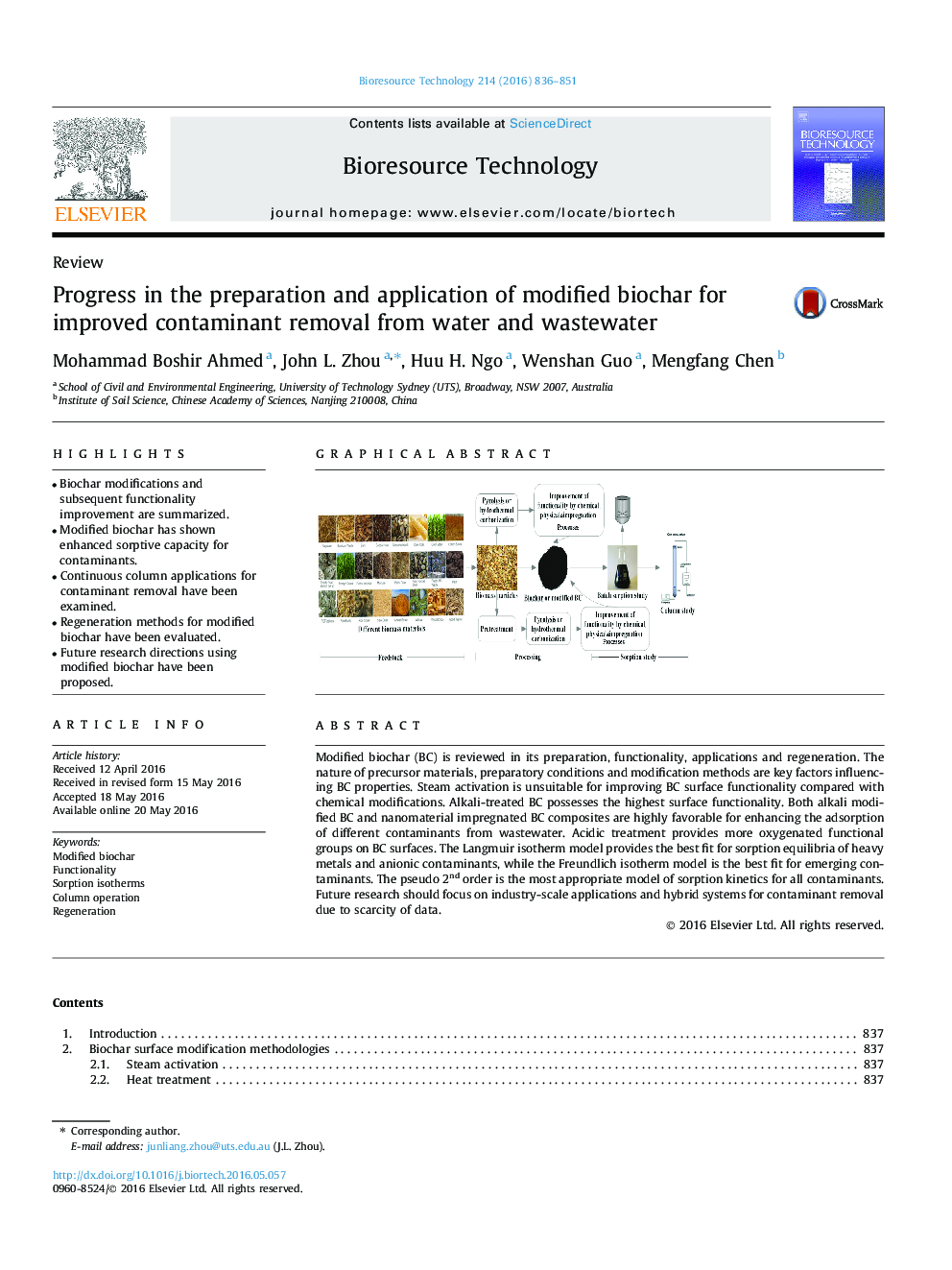| Article ID | Journal | Published Year | Pages | File Type |
|---|---|---|---|---|
| 679036 | Bioresource Technology | 2016 | 16 Pages |
•Biochar modifications and subsequent functionality improvement are summarized.•Modified biochar has shown enhanced sorptive capacity for contaminants.•Continuous column applications for contaminant removal have been examined.•Regeneration methods for modified biochar have been evaluated.•Future research directions using modified biochar have been proposed.
Modified biochar (BC) is reviewed in its preparation, functionality, applications and regeneration. The nature of precursor materials, preparatory conditions and modification methods are key factors influencing BC properties. Steam activation is unsuitable for improving BC surface functionality compared with chemical modifications. Alkali-treated BC possesses the highest surface functionality. Both alkali modified BC and nanomaterial impregnated BC composites are highly favorable for enhancing the adsorption of different contaminants from wastewater. Acidic treatment provides more oxygenated functional groups on BC surfaces. The Langmuir isotherm model provides the best fit for sorption equilibria of heavy metals and anionic contaminants, while the Freundlich isotherm model is the best fit for emerging contaminants. The pseudo 2nd order is the most appropriate model of sorption kinetics for all contaminants. Future research should focus on industry-scale applications and hybrid systems for contaminant removal due to scarcity of data.
Graphical abstractFigure optionsDownload full-size imageDownload as PowerPoint slide
